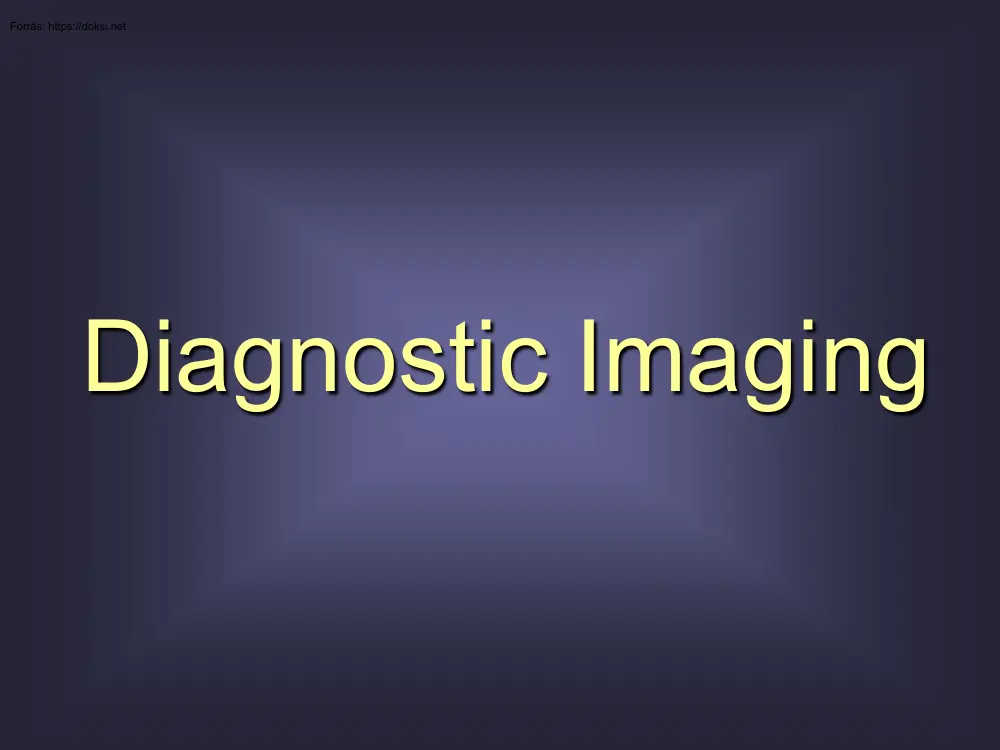Comments
No comments yet. You can be the first!
What did others read after this?
Content extract
Diagnostic Imaging Principle of diagnostic imaging • To obtain visual information from tissues/organs, in most cases: • ENERGY TRANSMISSION to organism • Interaction • Retrieval of modified energy carrying signals • Signal processing Physics of diagnostic imaging Propagating energy: wave or radiation Electromagnetic waves – Radiography, fluoroscopy – CT – MRI – Endoscopy – Light microscopy – Telethermography – Scintigraphy, SPECT (γ-rays) Mechanical waves – (Ultra)sonography DIAGN. RADIOLOGY Corpuscular radiation – Electron microscopy (β-) – PET (β+) DIAGN. IN VIVO NUCLEAR MEDICINE Electromagnetic waves – Radiography, fluoroscopy – CT – MRI – Endoscopy – Light microscopy – Telethermography – Scintigraphy, SPECT (γ-rays) – Scintigraphy, SPECT (γ-rays) – CT, radiography, fluoroscopy (x-rays) – Light microscopy, endoscopy – Telethermography – MRI Physics diagnostic There are of therapeutic fields imaging
as well Propagating energy: wave or radiation Electromagnetic waves – Radiography, fluoroscopy – CT – MRI – Endoscopy – Light microscopy – Telethermography – Scintigraphy, SPECT (γ-rays) Mechanical waves – (Ultra)sonography DIAGN. RADIOLOGY Corpuscular radiation – Electron microscopy (β-) – PET (β+) DIAGN. IN VIVO NUCLEAR MEDICINE There are therapeutic fields as well • Interventional radiology • Radiotherapy Where is the source? Outer Inner source of radiation/waves X-ray, CT, US MRI, NM Interaction between radiation/wave & medium a) Reflection b) Change in direction (e.g refraction) c) d) (+ Absorption Scattering Divergation ATTENUATION) CONTRAST AGENTS • Better contrast • More details • Depiction of movement E.g circulation kinetics Diagnostic imaging means consultation
as well Propagating energy: wave or radiation Electromagnetic waves – Radiography, fluoroscopy – CT – MRI – Endoscopy – Light microscopy – Telethermography – Scintigraphy, SPECT (γ-rays) Mechanical waves – (Ultra)sonography DIAGN. RADIOLOGY Corpuscular radiation – Electron microscopy (β-) – PET (β+) DIAGN. IN VIVO NUCLEAR MEDICINE There are therapeutic fields as well • Interventional radiology • Radiotherapy Where is the source? Outer Inner source of radiation/waves X-ray, CT, US MRI, NM Interaction between radiation/wave & medium a) Reflection b) Change in direction (e.g refraction) c) d) (+ Absorption Scattering Divergation ATTENUATION) CONTRAST AGENTS • Better contrast • More details • Depiction of movement E.g circulation kinetics Diagnostic imaging means consultation





 When reading, most of us just let a story wash over us, getting lost in the world of the book rather than paying attention to the individual elements of the plot or writing. However, in English class, our teachers ask us to look at the mechanics of the writing.
When reading, most of us just let a story wash over us, getting lost in the world of the book rather than paying attention to the individual elements of the plot or writing. However, in English class, our teachers ask us to look at the mechanics of the writing.